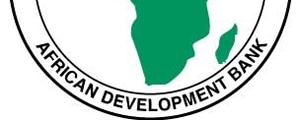
THE African Development Bank (AfDB) is working with co-operating partners to help Zimbabwe recover from fiscal constraints and liquidity challenges, the bank’s chief economist and vice-president Mthuli Ncube said yesterday.
NDAMU SANDU IN KIGALI, RWANDA
Zimbabwe’s stuttering growth is attributed to the debt overhang that militates against the inflow of lines of credit necessary to rebuild the economy.
According to latest data, Zimbabwe’s external debt is over $6 billion and that debt burden has stymied the flow of lines of credit.
The fiscal constraints have meant that not enough resources have been channelled to capital expenditure projects such as infrastructure development which is the engine for growth.
Ncube said yesterday the bank was looking at options available to drive economic growth.
“The AfDB is working hard with its partners to see how they can assist Zimbabwe in its partial debt-reduction agenda. We are looking at few options that if we implement, will go a long way in ensuring that the recovery that we are projecting happens,” Ncube said.
“We have three or so options which Zimbabwe can pursue to come out of this quagmire and get growth going.”
- Chamisa under fire over US$120K donation
- Mavhunga puts DeMbare into Chibuku quarterfinals
- Pension funds bet on Cabora Bassa oilfields
- Councils defy govt fire tender directive
Keep Reading
Ncube said the debt overhang has been a burden for Zimbabwe, adding that it has to be dealt with to reduce the negative impact it has on the economy.
He said the liquidity constraints within the financial sector were “due to the adoption of the United States dollar, but without means to adjust monetary policy as desired”.
Ncube said the new economic blueprint; the Zimbabwe Agenda for Sustainable Socio-Economic Transformation (ZimAsset) sought to address the debt issue and liquidity constraints.
“The attempt that we see in the ZimAsset strategy is an attempt to begin to deal with debt reduction, liquidity and the restoration of confidence and eventually the introduction of a domestic currency.
“We are hopeful that progress will be made. There are efforts that are being made so that the next two years may lead to a rebound. It’s a speculation about this success of the policy.”
A report, Africa Economic Outlook 2014, released on Monday said Zimbabwe was experiencing structural regression with the acceleration of de-industrialisation and informalisation, pointing to a massive decline in manufacturing’s contribution to economic output.
The report said the informalisation of the economy saw the manufacturing sector contributing 7,2% of gross domestic product in 2002 from a peak of 26,9% in 1992.
“Zimbabwe’s economy remains in fragile state, with an unsustainably high external debt and massive deindustrialisation and informalisation,” the report said. The report is a collaborative effort of AfDB, United Nations Development Programme and the Organisation of the Economic Cooperation and Development. The report is bullish about the outlook projecting that Zimbabwe would register real GDP growth of 4% this year up from an estimated 3,7% registered last year. The report said more remains to be done in Zimbabwe to improve the business environment. “Key challenges to doing business in Zimbabwe include policy inconsistency, funding constraints, corruption, inefficient government bureaucracy and inadequate infrastructure,” it said. Inflation is expected to slow down to 4% this year from 4,1% recorded last year. Inflation developments will continue to be influenced by the US$/ZAR exchange rate, international oil prices and local utility charges. “Persistent liquidity shortages combined with low effective demand and a weak South African rand will dampen inflationary pressures in the economy,” the report said.











